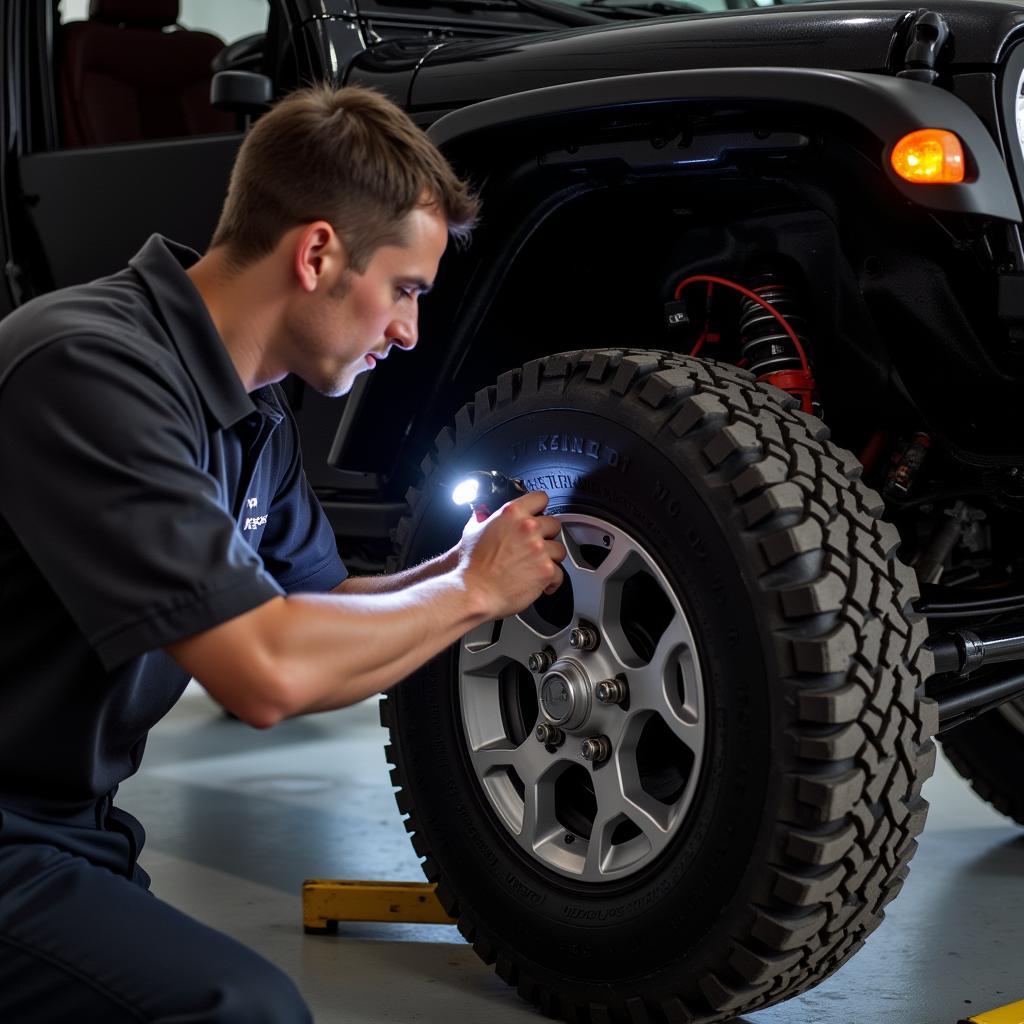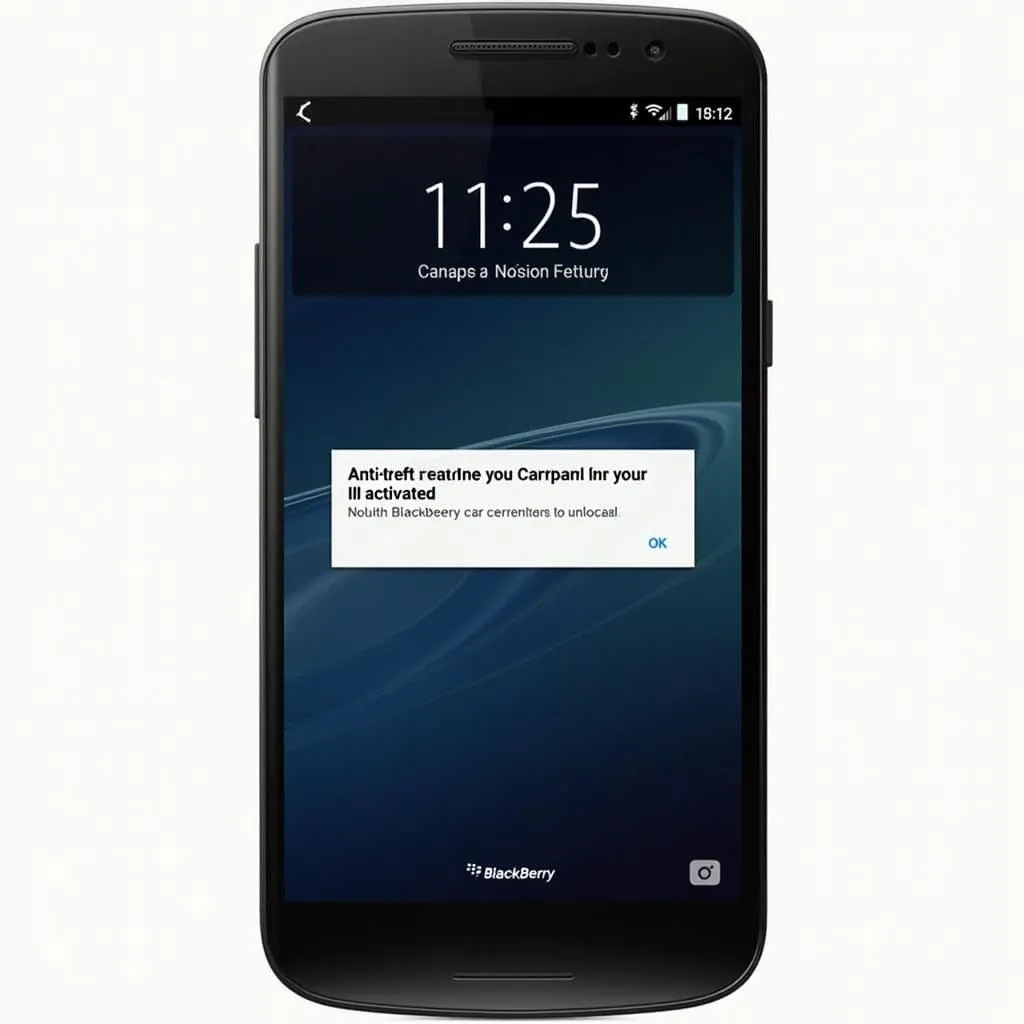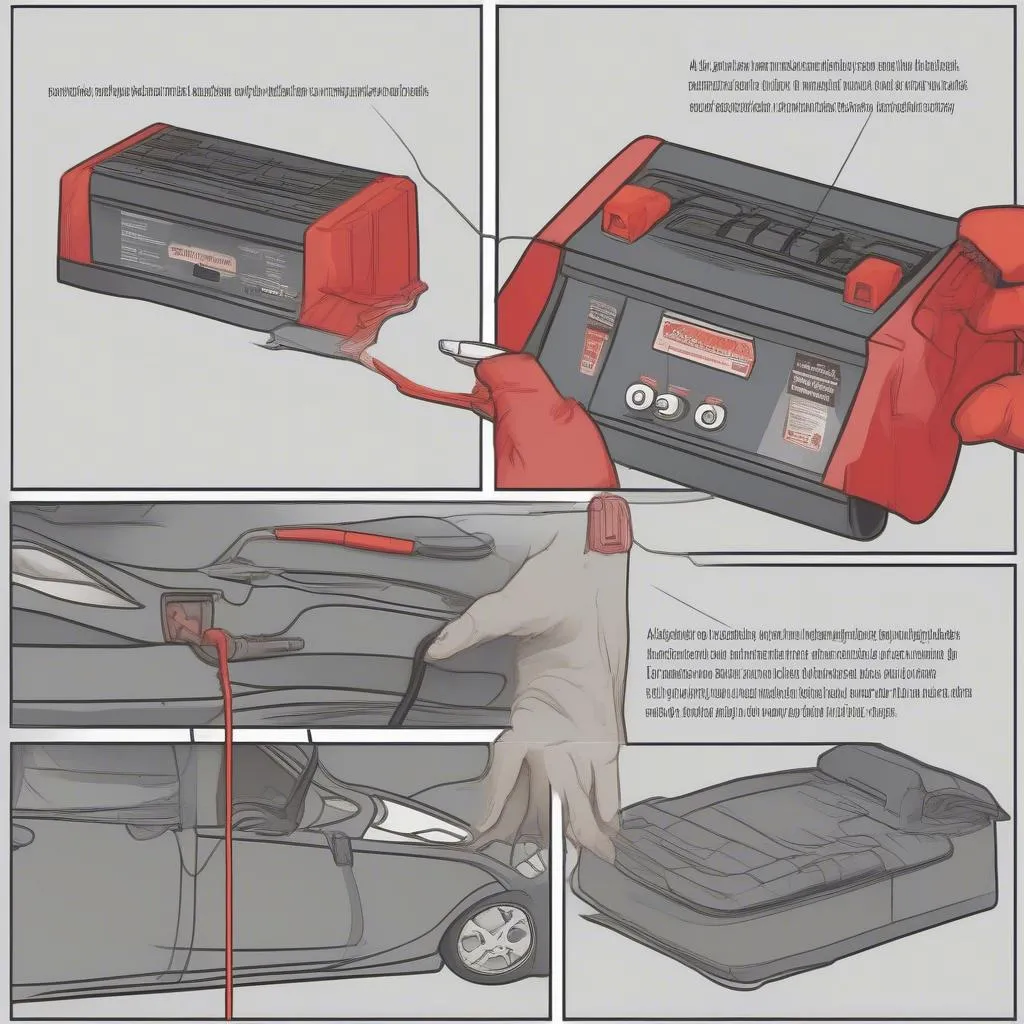Driving your Jeep Wrangler off-road is an exhilarating experience, but a glowing brake warning light can quickly dampen the fun. This light is your Jeep’s way of telling you something’s not right with the braking system, and ignoring it can lead to dangerous situations. This article will guide you through the common causes of a brake warning light on a Jeep Wrangler and provide insights on how to diagnose and potentially resolve the issue.
Understanding Your Jeep Wrangler’s Brake Warning Light
The brake warning light, often a red circle with an exclamation mark or the word “BRAKE” inside, can illuminate for several reasons. It’s essential to understand that this light doesn’t always mean your brakes are about to fail.
Here’s what it could indicate:
- Low Brake Fluid: This is the most common culprit. A leak in the brake lines or worn-down brake pads can reduce brake fluid levels, triggering the warning light.
- Parking Brake Engaged: Accidentally leaving the parking brake even slightly engaged can cause the light to come on.
- Faulty Brake Light Switch: This switch, located near the brake pedal, signals the brake lights to illuminate when you apply the brakes. A malfunctioning switch can disrupt this signal and activate the warning light.
- ABS Issue: If your Jeep Wrangler has an Anti-lock Brake System (ABS), a separate warning light usually illuminates for ABS-related problems. However, in some cases, the general brake warning light might come on as well, indicating an issue with the ABS module, wheel speed sensors, or related wiring.
- Serious Brake System Failure: While less common, a complete brake system failure is possible and extremely dangerous. If you experience a soft or spongy brake pedal along with the warning light, stop the vehicle immediately and seek professional assistance.
Diagnosing the Problem: A Step-by-Step Guide
Before you panic, here’s a systematic approach to help you pinpoint the cause of the brake warning light on your Jeep Wrangler:
- Check the Parking Brake: It might seem obvious, but ensure the parking brake is fully disengaged. Sometimes, a slight bump can partially engage it.
- Inspect Brake Fluid Level: Park your Jeep on a level surface and locate the brake fluid reservoir under the hood. The reservoir is usually translucent with “DOT 3” or “DOT 4” printed on the cap. Check the fluid level; it should fall between the minimum and maximum marks.
- Examine Brake Lines and Hoses: Visually inspect the brake lines and hoses for any signs of leaks, cracks, or damage. Focus on the areas around the wheels and under the vehicle.
- Consider Your Driving Experience: Did the warning light appear suddenly or gradually? Was there any change in how the brake pedal feels? A soft or spongy pedal, along with the light, indicates a potential leak in the system.
- Seek Professional Help: If you’re unsure about any aspect of the diagnosis or suspect a more serious issue, it’s crucial to consult a qualified mechanic specializing in Jeep Wrangler brake systems.
 Inspecting brake lines on a Jeep Wrangler for leaks
Inspecting brake lines on a Jeep Wrangler for leaks
Common Causes of Brake Warning Light by Jeep Wrangler Model Year
While the general causes mentioned above apply to most Jeep Wranglers, some model years have specific issues that can trigger the brake warning light:
- 2001 Jeep Wrangler: Flashing brake warning light along with the ABS light often points to a faulty ABS sensor or a problem within the ABS control module.
- 2009 Jeep Wrangler: Some owners have reported issues with the brake light switch failing prematurely, leading to an illuminated warning light.
For model-specific information, refer to your Jeep Wrangler’s owner’s manual or consult a specialized mechanic.
jeep wrangler brake warning light
Remote Diagnostics and Programming: The Future of Jeep Wrangler Repair
Modern technology has revolutionized automotive repair. Remote diagnostics and programming allow qualified technicians to access your Jeep Wrangler’s computer system remotely, pinpoint issues with the braking system, and even reprogram certain modules. This eliminates the need for physical visits in some cases, saving you time and potentially reducing repair costs.
Here are some advantages of remote diagnostics and programming:
- Convenient and Time-Saving: No more scheduling appointments and waiting at repair shops.
- Accurate Diagnostics: Experienced technicians using advanced software can often identify issues that might be missed during a visual inspection.
- Software Updates and Reprogramming: Address software glitches or update your Jeep Wrangler’s braking system with the latest software versions.
2001 jeep wrangler brake warning flashing and abs light on
Expert Insights: What the Pros Know About Jeep Wrangler Brake Lights
“Many Jeep Wrangler owners overlook the importance of regular brake fluid flushes. Over time, brake fluid absorbs moisture, which reduces its effectiveness and can lead to corrosion within the braking system. I recommend flushing the brake fluid every 2 years or as recommended in your owner’s manual.” – Mark Stevenson, Certified Automotive Technician
“When diagnosing a brake warning light on a Jeep Wrangler, it’s crucial to pay attention to the little details. The way the brake pedal feels, any unusual noises during braking, and the circumstances under which the light appears can provide valuable clues about the underlying issue.” – Lisa Chen, Automotive Engineer
2009 jeep wrangler brake warning light
Conclusion
A brake warning light on your Jeep Wrangler shouldn’t be ignored. Understanding its potential causes and following a systematic diagnostic approach can help you address the issue promptly and safely. Remember, when in doubt, always seek professional assistance from a qualified mechanic specializing in Jeep Wrangler brake systems. By prioritizing brake maintenance and addressing warning signs promptly, you can ensure your Jeep Wrangler remains a reliable and safe off-road companion.
FAQ
1. Can I drive my Jeep Wrangler with the brake warning light on?
It’s highly discouraged. While a temporarily illuminated light due to a disengaged parking brake might not be a major concern, any other reason for the light requires immediate attention. Driving with a compromised braking system can lead to accidents.
2. How much does it cost to fix a brake warning light on a Jeep Wrangler?
The repair cost depends entirely on the underlying cause. A simple brake fluid top-up might cost a few dollars, while a complete brake system overhaul can cost hundreds or even thousands.
3. How often should I check my Jeep Wrangler’s brake fluid level?
It’s a good practice to check your brake fluid level at least once a month.
4. What type of brake fluid does a Jeep Wrangler use?
Most Jeep Wrangler models use DOT 3 or DOT 4 brake fluid. Refer to your owner’s manual for the specific type recommended for your vehicle.
5. How do I know if my Jeep Wrangler’s brake pads need replacement?
If you hear a squealing or grinding noise when applying the brakes, it’s a strong indication that your brake pads are worn and need replacement.
anti lock brake system warning light
6. Can I add brake fluid myself?
Yes, but it’s important to use the correct type of brake fluid specified in your owner’s manual and avoid overfilling the reservoir. If you’re unsure, it’s best to consult a professional.
7. Where can I find a reliable mechanic specializing in Jeep Wrangler brake repair?
You can ask for recommendations from fellow Jeep owners, check online reviews, or consult the Jeep dealership for authorized repair shops.


